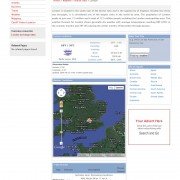International SEO Targeting of Same-Language Regions
One of the intricate aspects of SEO and online marketing is the task of developing and positioning a website for multiple regions that share a common language. This article provides valuable insights into international SEO practices that can effectively rank a single company’s website with identical content and services in two distinct countries, catering to two different audiences.
Is Same-Language Content for Different Countries Considered Duplicate?
There’s a common misconception that duplicate content is detrimental. While it’s true that repetitive content can be redundant and unappealing, when it comes to ranking a site internationally, duplicate content can be approached differently. Consider the subtle differences between British (UK) English and American (U.S.) English. It’s entirely feasible to have two distinct sites targeting these regions, even if the core content remains the same.
A Real-world Example from the Fashion Industry
A few years ago, we collaborated with a leading name in the fashion sector. This brand had individual websites tailored for numerous global languages, including several English variants. Each site boasted unique content. At the time, this strategy was based on the then-current best practices. However, as SEO methodologies evolved, so did our approach. Insights from industry experts have since underscored the value of using subfolders (in lieu of multiple websites) for international SEO, allowing for better-targeted, more streamlined and effective content management across regions.
Key Aspects of International SEO
- Language or Country Targeting: Decide whether you’re targeting a specific language or a country. This decision will influence your SEO strategy.
- Local Contact Details: Ensure you have a local phone number and address for the region you’re targeting.
- Meta Tags and Design: These should be region-specific and user-friendly.
- Language Specificity: Ensure the written language caters to the local audience.
- XML Sitemaps and Google Webmaster Tools: Utilise these tools to enhance your site’s visibility.
- Local Link Building: Links from local sources are invaluable. For instance, if you’re targeting Arizona, prioritise links from local entities.
- Content and Imagery: Be culturally sensitive. What works in one country might not resonate in another. Regularly update your content, especially if you’re not seeing the desired results. Adjust your keywords and observe the impact on your rankings.
Implementing hreflang Tags for International SEO
In a recent update, Google introduced the ‘x-default hreflang‘ tag. This tag signals to Google the default page to display when no other page is better suited for specific country users.
When targeting multiple regions with similar languages, it’s essential to use the Google-suggested hreflang attribute. This ensures search engines serve the correct language or regional URL in search results.
Code Example for Multiple Regions
Below is an example of how to implement hreflang tags for UK English, US English, and Australian English, along with a default page:
<link rel="alternate" href="https://example.com/en-gb" hreflang="en-gb" />
<link rel="alternate" href="https://example.com/en-us" hreflang="en-us" />
<link rel="alternate" href="https://example.com/en-au" hreflang="en-au" />
<link rel="alternate" href="https://example.com/" hreflang="x-default" />
In this example:
- The first line specifies the UK English version of the page.
- The second line specifies the US English version.
- The third line specifies the Australian English version.
- The fourth line, with
x-default, indicates the default page to be shown when no other page is more appropriate for a specific user based on their location and language settings.
By using these tags, you guide search engines to display the most relevant page based on the user’s location and language preferences.
The Rewards of Effective International SEO
By following the above guidelines, businesses can significantly boost their global presence and reputation. The potential benefits include:
- A surge in global traffic.
- Attracting international clientele.
- Positive impact on revenue.
- Increased website engagement and broader business opportunities.
International SEO is a meticulous process. To reap its full benefits, consider partnering with a professional SEO and Internet marketing agency.










Leave a Reply
Want to join the discussion?Feel free to contribute!